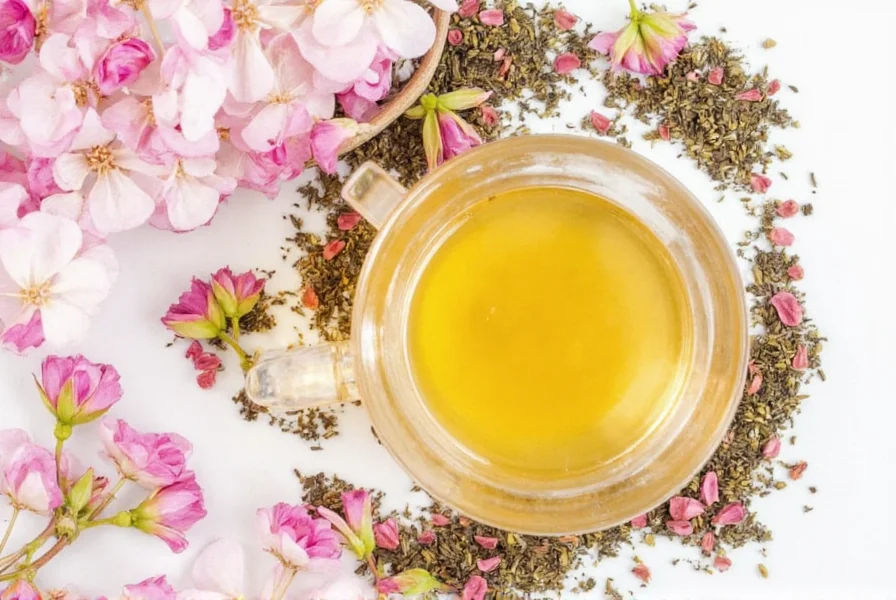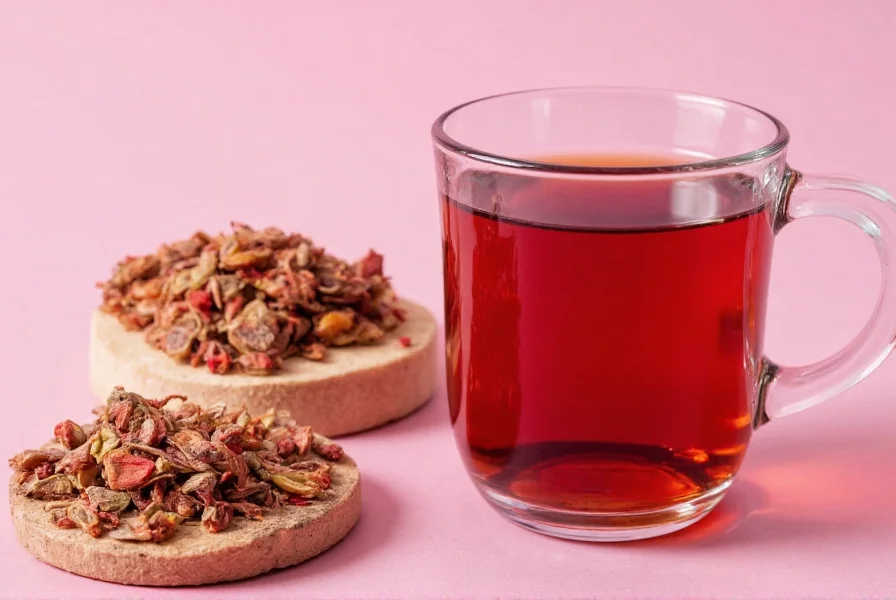Red clover (Trifolium pratense) has been used in traditional medicine for centuries, but modern research is now validating many of its purported health benefits. This flowering plant contains significant amounts of isoflavones—plant compounds that function as phytoestrogens—which interact with estrogen receptors in the body. Unlike many herbal supplements making exaggerated claims, red clover tea's benefits are supported by a growing body of clinical research, though important limitations exist.
What Makes Red Clover Tea Unique
Unlike common black or green teas, red clover tea is an herbal infusion made from the dried flowers of the red clover plant. Its distinctive value comes from four key isoflavones: biochanin A, formononetin, daidzein, and genistein. These compounds give red clover tea its characteristic health properties, particularly its mild estrogenic effects that differentiate it from other herbal teas.

Science-Backed Health Benefits of Red Clover Tea
Menopausal Symptom Relief
Multiple clinical trials support red clover tea benefits for menopause management. A 2022 meta-analysis published in Climacteric reviewed 12 studies involving over 1,500 women and found that red clover isoflavones reduced hot flash frequency by 33% and severity by 44% compared to placebo. The effects typically become noticeable after 4-8 weeks of regular consumption. Women seeking natural alternatives to hormone replacement therapy often find red clover tea for hot flashes provides moderate but meaningful relief without the risks associated with pharmaceutical interventions.
Cardiovascular Support
Research indicates red clover tea cardiovascular benefits may include improved arterial flexibility and reduced inflammation. A 2021 study in the Journal of Functional Foods demonstrated that daily consumption of red clover tea significantly improved flow-mediated dilation (a measure of blood vessel function) in postmenopausal women after 12 weeks. The isoflavones appear to enhance nitric oxide production, which helps maintain healthy blood pressure levels. While not a replacement for prescribed heart medications, regular consumption may complement heart-healthy lifestyle choices.
Bone Health Maintenance
Emerging evidence suggests red clover tea for bone health may help slow age-related bone density loss. A longitudinal study tracking 300 postmenopausal women over two years found that those consuming red clover isoflavones daily maintained 1.8% higher bone mineral density in the spine compared to the control group. The mechanism appears related to the isoflavones' ability to modulate bone turnover markers, potentially reducing osteoporosis risk. However, more long-term research is needed to confirm these preliminary findings.
Skin Health and Antioxidant Effects
The antioxidant properties of red clover tea contribute to potential skin health benefits. Laboratory studies show its isoflavones combat oxidative stress and may protect against UV damage. While topical applications have been more extensively studied, regular consumption of red clover tea for skin health appears to support collagen production and reduce inflammation markers associated with aging skin. A small 2020 pilot study noted improved skin elasticity in participants after 12 weeks of daily consumption.
| Benefit Area | Research Support Level | Timeframe for Effects | Recommended Daily Intake |
|---|---|---|---|
| Menopausal symptoms | Strong (multiple RCTs) | 4-8 weeks | 40-80mg isoflavones |
| Cardiovascular health | Moderate (observational & small trials) | 8-12 weeks | 40-80mg isoflavones |
| Bone density | Preliminary (limited long-term studies) | 6+ months | 40-80mg isoflavones |
| Skin health | Emerging (mostly lab studies) | 8-12 weeks | 40-80mg isoflavones |
How Red Clover Tea Works: The Science Explained
The primary active compounds in red clover tea—biochanin A and formononetin—are converted by gut bacteria into the more potent isoflavones genistein and daidzein. These phytoestrogens have a molecular structure similar to human estrogen, allowing them to bind to estrogen receptors, particularly the beta subtype. This selective binding explains why red clover tea benefits target specific tissues (like bone and blood vessels) without affecting others (like breast tissue) to the same degree as pharmaceutical estrogens.
Unlike synthetic hormone therapies, red clover's effects are much milder—typically providing 1-5% of the estrogenic activity of natural human estrogen. This moderate activity contributes to its favorable safety profile but also means benefits develop gradually rather than immediately.
Important Research Limitations
While promising, red clover tea research has significant limitations. Most clinical trials have been relatively short-term (3-12 months), and long-term safety data beyond two years is limited. Additionally, many studies use standardized extracts rather than brewed tea, making precise dosage recommendations challenging. The quality and isoflavone content of commercial red clover teas can vary substantially based on growing conditions, processing methods, and brewing techniques.
Safety Considerations and Potential Side Effects
Red clover tea is generally well-tolerated, but certain precautions are essential:
- Contraindications: Not recommended for pregnant or breastfeeding women, or individuals with hormone-sensitive cancers
- Medication interactions: May interact with blood thinners, hormone therapies, and certain cancer medications
- Common side effects: Mild digestive upset or headache in sensitive individuals
- Rare reactions: Allergic responses in those sensitive to legumes
Most reported red clover tea side effects are mild, but anyone with serious health conditions should consult a healthcare provider before regular consumption. The American Herbal Products Association rates red clover as Class 2B (not to be used during pregnancy) and Class 3 (may interact with anticoagulant drugs).
Proper Preparation and Consumption Guidelines
To maximize red clover tea benefits while minimizing potential risks:
- Use 1-2 teaspoons of dried red clover flowers per 8 ounces of water
- Brew with water just below boiling point (190-200°F) for 10-15 minutes
- Consume 1-3 cups daily, preferably between meals for optimal absorption
- Rotate with other herbal teas to prevent potential tolerance buildup
- Choose organic, non-irradiated products from reputable suppliers
For those wondering how to prepare red clover tea properly, the extended steeping time is crucial as it allows maximum extraction of the beneficial isoflavones. Unlike green or black tea, red clover can be steeped longer without becoming bitter.

Red Clover Tea vs. Other Herbal Alternatives
When comparing red clover tea to black cohosh—a popular alternative for menopausal symptoms—research suggests red clover may offer a more favorable safety profile with fewer liver-related concerns. However, black cohosh often provides faster relief for severe hot flashes. Unlike soy isoflavones, red clover contains unique compounds (biochanin A and formononetin) not found in significant quantities elsewhere, potentially offering complementary benefits when used alongside other phytoestrogen sources.
Conclusion: Balanced Perspective on Red Clover Tea Benefits
Red clover tea offers several evidence-supported health benefits, particularly for menopausal women seeking natural symptom management. Its cardiovascular and potential bone health benefits add to its value as part of a holistic wellness approach. However, it's not a miracle cure—benefits develop gradually and vary between individuals. As with any herbal remedy, realistic expectations and attention to quality are essential. For optimal results, incorporate red clover tea into a comprehensive health strategy that includes proper nutrition, regular exercise, and appropriate medical care.











 浙公网安备
33010002000092号
浙公网安备
33010002000092号 浙B2-20120091-4
浙B2-20120091-4